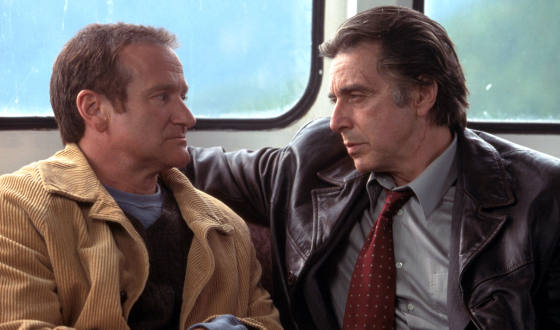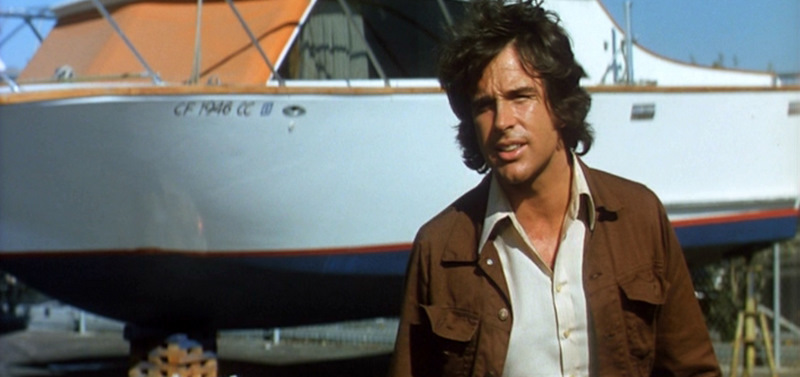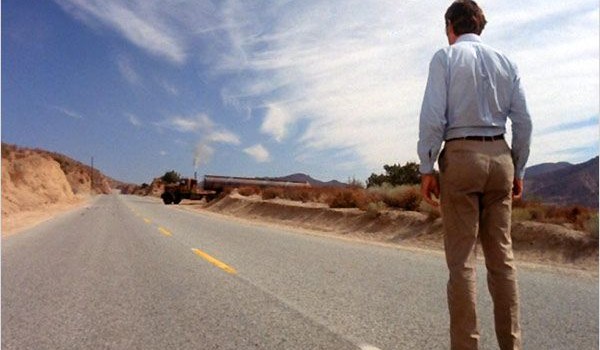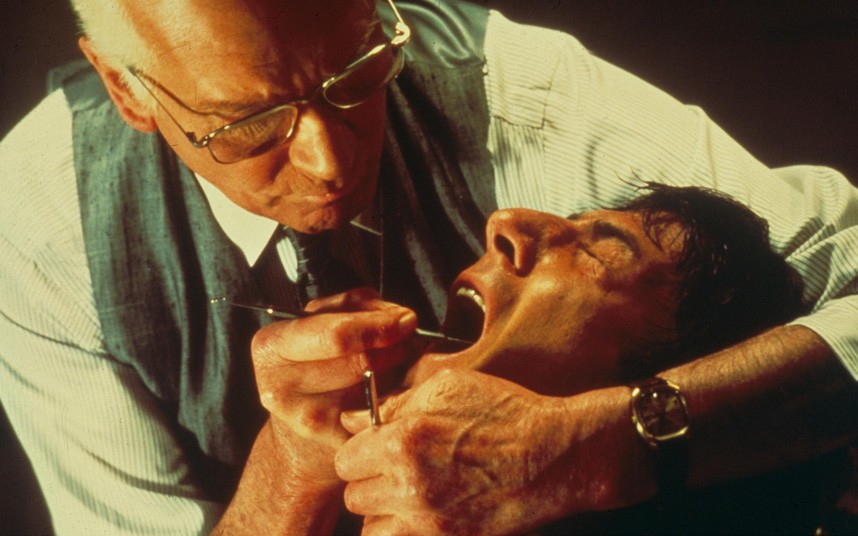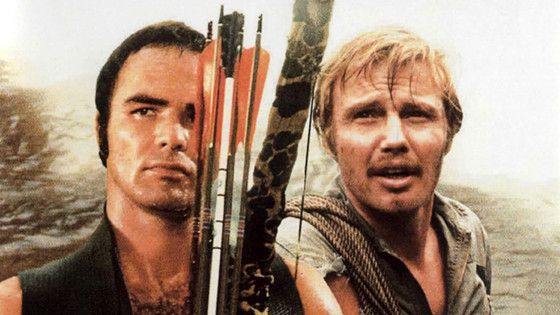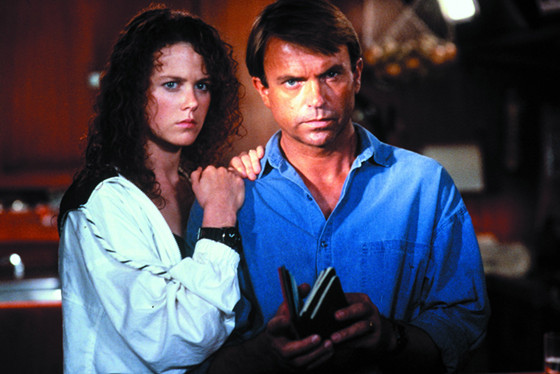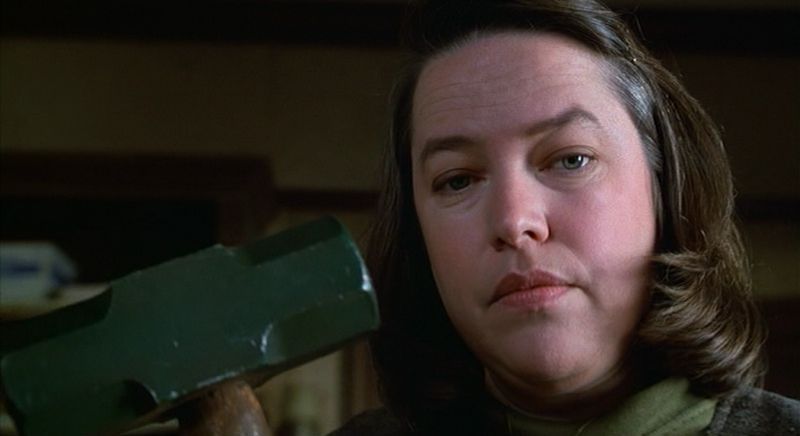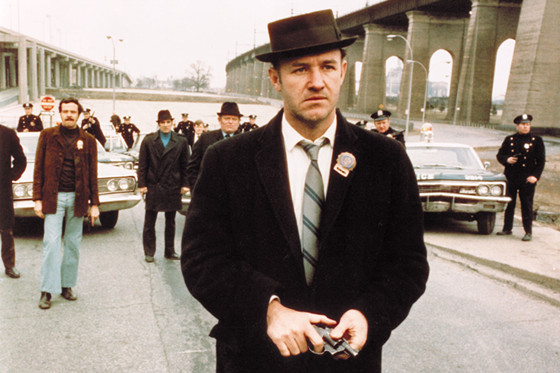23. Insomnia (dir. Christopher Nolan, 2002)
Before Christopher Nolan was given the proverbial keys to the Bat-Mobile he more than proved himself with this daylight drenched “Noir” set in the perpetual sun of a small Alaskan fishing town. Al Pacino plays the sleep deprived L.A. Homicide Detective Will Dormer, a man with a checkered past who has traveled to Alaska to help an old colleague with a murder case and to avoid an Internal Affairs investigation back home.
The late Robin Williams turns in perhaps his best, creepiest performance as local mystery writer Walter Finch, who, while being a prime suspect, knows all too much of Pacino’s past and present abuses of the law.
This is the rare remake (of Norwegian filmmaker Erik Skjoldbjærg’s 1997 “Insomnia”) that, while clearly taking its cues from the source material, elevates it to another level. Nolan’s “Insomnia” is simultaneously tranquil and nerve-wracking, like the moments you begin nodding blissfully to sleep only to find yourself being hunted within your dream.
22. The Parallax View (dir. Alan J. Pakula, 1974)
Between “Klute” and “All The President’s Men” Alan J. Pakula made this lesser seen, yet equally brilliant and perhaps more purely terrifying paranoid Suspense-Thrillers. “The Parallax View” spins a chilling tale of a secret society which takes select disenfranchised white men and trains (brainwashes?) them to be “patriotic assassins.”
Warren Beatty turns in an excellent performance as soft news journalist Joe Frady whose ex-girlfriend, Television Anchorwoman Lee Carter, shows up at his apartment, terrified that she may have witnessed too much during the assassination of a Presidential Candidate years ago at Seattle’s Space Needle.
When she indeed turns up dead, Frady looks down the rabbit-hole of evidence she had gathered, discovering that all signs lead to a nebulous company called The Parallax Corporation. With hints of John Frankenheimer’s equally brilliant, if decidedly loopier “The Manchurian Candidate,” Pakula’s humorless, deadly serious approach aids rather than hinders this film’s overall sense of helplessness in the face of faceless adversaries.
21. Duel (dir. Steven Spielberg, 1971)
While 1975’s “Jaws” was the film that launched Steven Spielberg’s career into the stratosphere, it was his 1971 made-for-TV movie “Duel” that jettisoned him from being Universal Executive Sid Sheinberg’s kid with potential to being hailed as the next Hitchcock.
Based on Richard Matheson’s short story, “Duel” is a white knuckler tale about a passive businessman (played by the excellent Dennis Weaver) driving through the California countryside who is continually stalked by a greasy covered tanker-truck. What elevates this simple plot from being an average Action chase film is Spielberg’s calibrated use of sound (with music only coming in at carefully selected moments, akin to Bresson) and a detailed selection of lenses and compositions that place us squarely in the perspective of Dennis Weaver’s lonely character, with the meta-last name of Mann.
In fact, we never see the face of the truck driver, just his tattooed arm, and are never given a clear reason for his relentless attack (echoes of Hitchcock’s “The Birds”). “Duel” so impressed the Universal Executives that extra scenes were then shot and the film was re-released as a theatrical Motion Picture in Europe.
20. Marathon Man (dir. John Schlesinger, 1976)
Dustin Hoffman plays Thomas “Babe” Levy, an NYU Political Science major, with a personal minor in marathon running, a skill he’ll put to good use in John Schlesinger’s unflinching Suspense-Thriller “Marathon Man.” After his brother Doc (Roy Scheider) shows up at his apartment door with a lethal knife wound, he finds out he may not have been who he thought he was.
In fact, no one may be exactly who he or she says they are, not his girlfriend Elsa, or the Government Agent Peter Janeway who comes to Babe’s aid after his brother’s death. Only Dr. Christian Szell, played by the ice cold Sir Laurence Olivier, is the person he says he is; a terrifying former Nazi Torturer who has come out of hiding to retrieve the enormous stash of diamonds he stole from the Jews he killed.
One will never forget the dental interrogation scene where he repeatedly asks a bewildered Hoffman: “Is it safe?” This intense story of survival, revenge and double crosses is as much Suspense-Thriller as it is a sadistic coming of age tale for Hoffman’s aptly named Babe, who is metaphorically thrown into the woods and must fight his way through the bowels of hell to find out who he really is and what he is truly made of.
“Marathon Man” also has the added bite of aspects percolating behind the scenes that enhance the production with its historic summit of Classical Acting Royalty in Olivier facing off against New York Method Actor Royalty in Hoffman as well as being the first theatrically released film to feature the use of camera operator Garret Brown’s new invention, the now ubiquitous Steadi-cam.
19. Deliverance (dir. John Boorman, 1972)
Nominated for three Academy Awards and winner of The Golden Globe Award for Best Picture, Best Actor in a Drama and Best Director, “Deliverance” is a supremely dark journey through the American Southern wilderness. Four friends, played by Jon Voight, Burt Reynolds,
Ned Beatty and Ronny Cox, businessmen from Atlanta, head down the fictional Cahulawasse River to play out their primal man fantasies and getting back to nature and proceed to have the Iron John kicked out of them when they run afoul of backwoods, inbred moonshiners.
It’s really just as straightforward as that, but John Boorman’s emotionally distant approach combined with cinematographer Vilmos Zsigmond’s luscious capturing of the natural surroundings along with top-notch performances all around raise James Dickey’s script (based on his novel) to an almost transcendent level of emotionally draining suspense and horror. One can’t help but emerge from viewing this thriller almost as traumatized as Ned Beatty’s character. Well, almost. Okay, not even close.
18. Dead Calm (dir. Phillip Noyce, 1989)
In 1989, George Miller’s Australian Production Company Kennedy-Miller introduced Nicole Kidman to the world audience with “Dead Calm” a movie as relentlessly tension filled, as it is scenically gorgeous.
Filmed near the Great Barrier Reef, Sam Neil and Kidman star as Naval Cpt. John Ingram and his wife Rae, a couple recovering from the loss of a child with a relaxing month long sail when along comes a spider in the form of Billy Zane as the arrested developed castaway Hughie. John goes to investigate his sinking ship only to find murdered, naked bodies and a homemade video depicting Hughie losing his mind.
From that moment forward, “Dead Calm” ties your nerves in nautical knots as John tries to make it back to Rae and his vessel that the delusional Hughie has taken as his own. Only the tacked on ending insisted upon by Warner Bros. leaves a somewhat bad taste in the viewing experience of this otherwise engrossing, believable and psychologically disturbing thriller at sea.
17. Misery (dir. Rob Reiner, 1990)
Rob Reiner’s second foray into Stephen King’s work (“Stand By Me” being based on King’s short story, “The Body) proved superb with his two-handed Suspense-Thriller “Misery.” Kathy Bates won the Oscar for her blisteringly delirious performance as Annie Wilkes, “number one fan” to James Caan’s unlucky writer Paul Sheldon, who after a car wreck is stranded at Annie’s cabin in the Colorado woods. In a sense, one can put “Misery” alongside “Charade” as the most Hitchcockian of films on this list with its seamless blending of gallows humor and thrills that teeters just on the edge of horror.
Apparently, teetering on the edge of horror was not what King had in mind as he was upset with screenwriter William Goldman’s changes to his novel, most notably the change that had Annie taking a sledgehammer to Paul’s foot rather than King’s more gruesome removal of Paul’s feet by ax blade. In doing this, Reiner and Goldman were knowingly shaping the source material to fit the parameters of the Suspense-Thriller rather than the Horror genre, as the added gore would certainly have tipped the balance in favor of the latter.
16. The French Connection (dir. William Friedkin, 1971)
Based upon the non-fiction book by Robin Moore, “The French Connection” is that rare crime film whose intensity, personal stakes, and documentary-like realism rips through your nervous system like a shot of adrenaline spiked whiskey, propelling this cat and mouse cops and robbers tale into the realm of the Suspense-Thriller.
Gene Hackman won the Oscar for Best Actor as Detective Jimmy “Popeye” Doyle whose dogged pursuit of French heroin kingpin Alan Charnier (Fernando Rey) brings this already hot tempered Detective past the point of no return and us along with him. In an age where chase scenes regularly employ CGI, “The French Connection” reminds us of just what is missing: the raw nerve and vitality of real human beings performing viscerally dangerous, grounded in reality stunts.
The film’s famous car chase beneath New York’s elevated train is still the benchmark with its cross-cutting, blood, sweat and grinding metal intensity, an approach that influenced John Frankenheimer’s underrated “Ronin,” “The Bourne Identity” series, as well as Christopher Nolan’s stunning, CGI-less chase scene filmed above and beneath the streets of Chicago in “The Dark Knight.”
But “The French Connection” really drives on the pedal to the metal of Hackman’s working class, down and dirty performance. His pull-no-punches portrayal of this deeply flawed, anti-hero detective earns our sympathy as much from Hackman’s charisma as from Friedkin’s focus on of all things, class conflict; Doyle’s working class cop fighting desperately, personally to trump Fernando Rey’s deviously charming, highly cultured Charnier.
Doyle’s obsession to rise above his gritty day-to-day existence busting street deals and catch this really big fish reaches its apex with a foot chase into an abandoned factory that is perhaps as haunting an end scene as there’s ever been to a crime story, one that lingers agonizingly as the screen grows dark.
